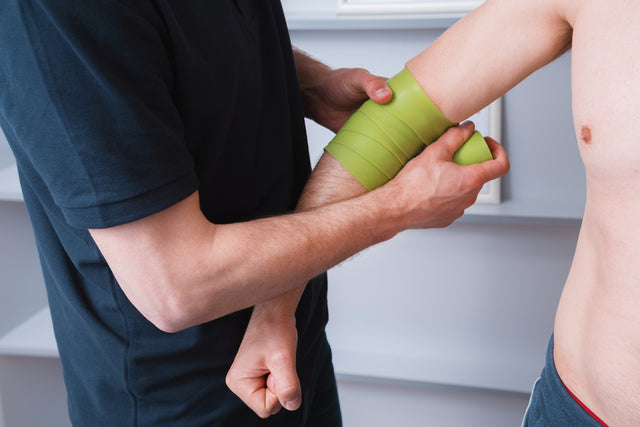With the all-encompassing and wide reach of social media, we as a society are more concerned and conscientious of our bodies and physical appearance more than ever. Exploitation of one own’s insecurities is simply a by-product of the explore page on Instagram, flooded with stories of beautiful people with rock hard abs, blue eyes, laying on the beach with their latest body upgrade. It can be easy to get lost in the noise, and compare yourself, making you feel like maybe your body isn’t good enough. Spending an exorbitant amount of time worrying about your appearance, especially when the flaws you worry about are not discernibly apparent to others, could mean you struggle with a mental illness called body dysmorphic disorder (BDD) or body dysmorphia. While some concerns about your body are normal, sometimes it can be taken too far.
What Is Body Dysmorphic Disorder or Body Dysmorphia
Body dysmorphia is a mental health condition, in which you cannot stop thinking about certain flaws in your appearance. These flaws may elicit psychological issues and emotions such as embarrassment, lack of confidence, anxiousness, and shame. Body dysmorphia often lasts until a flaw is overcome and in a majority of cases can never be treated or cured.
In 1891, Enrico Morselli, an Italian psychiatrist, coined the term dysmorphophobia to describe the condition of people who perceive themselves as flawed but with no apparent physical deformities. This term was derived from the Greek word “dysmorfia,” which means “ugliness.” Pierre Janet, a French psychologist, has discussed cases of this condition, who labeled it as “l’obsession de la honte du corps,” which translates to “obsessions of shame of the body.” Sigmund Freud also detailed a case known as “Wolf Man,” a man obsessed with his nose, which caused him significant social distress. This condition was first recognized in the DSM in 1980 as an atypical somatoform disorder. In 1987, it was classified as a distinct somatoform disorder. DSM 5 now classifies BDD under obsessive-compulsive and related disorders.[R, R]
What Causes Body Dysmorphia
The etiology or mechanisms of body dysmorphic disorder can be evolved and developed from several factors including biological, cultural, psychosocial, and neuropsychological factors [R]. Research suggests that childhood trauma, emotional distress, and neglect is related to the development of BDD. Growing up overweight for example, being teased by other children for flaws, can also contribute to the development of body dysmorphia. Chemical imbalances in the brain, as well as genetics also play a part as a potential cause of BDD.
Body Dysmorphia Symptoms
It’s estimated that body dysmorphia 1.9% in the community, around 5.9% in adult outpatient psychiatric settings, and 7.4% in adult inpatient psychiatric settings [R].
Some of the symptoms of body dysmorphia may include, but are not limited to:
- Constantly and chronically worrying about flaws that have to do with your body or your facial appearance.
- Spending an excessive amount of time comparing your physical appearance and looks to others.
- Constantly looking at yourself in the mirror, body shaming, and engaging in negative self-talk
- Engaging in cosmetic surgery, constantly trying to enhance your looks and physical traits with little satisfaction.
- Picking at your skin.
- Belief that others notice or perceive your appearance in a negative way
Body Dysmorphia Treatments
Unfortunately, there is no way to prevent body dysmorphia. BDD is a relatively common disorder, that ranges on the obsessive-compulsive spectrum disorder based on the similarities it was with OCD. Body dysmorphia, in extreme circumstances is marked with severe impairment in psychosocial functioning, notably poor quality of life, and high suicidality rates.
Treatment can include psychological and pharmacological interventions such as cognitive behavioral therapy and metacognitive therapy. Often times, BDD is left untreated. SSRIs such as fluoxetine have been shown to be beneficial.[R] [R]
Currently, there are no studies that directly compare the efficacy of therapy alone versus treatment with medications alone.[R]
If you are considering surgical intervention, attempting to correct the perceived flaw with cosmetic or surgical interventions has been shown not to improve outcomes and has the potential to make the disorder worse.[R] This of course, is also associated and correlated to what exactly you are correcting for.
For example, a simple mole removal, which can conjure BDD symptoms, would in this case, perhaps solve for BDD related issues. However, major surgical intervention (gastric bypass, breast augmentation, and reconstructive surgery for example) can often lead to temporary satisfaction, with recurring BDD symptoms.
If your body dysmorphia is directly related to physical appearance, or body composition, the best way to treat this, is through nutritional and physical training protocols. Working with a certified nutrition coach, registered dietitian, or nutritionist, can help you with body recomposition, and obtain your desired physical appearance or attributes, as opposed to surgical intervention. Diet and exercise, are the tried and true ways to help lose weight and gain more muscle mass, no matter your body aesthetic goals. There are no magic pills that will help you get there. And surgical intervention, will often leave you with other flaws, such as scars, loose skin, or muscle atrophy that can trigger body dysmorphia in different ways.
Body Dysmorphia: Takeaway
Most of the time body dysmorphia is left untreated. Surgical intervention and appearance is often corrected for before approaching mental health providers. Studies have shown that cosmetic professionals have some degree of awareness of BDD. However, the number of patients who are identified to have this disorder is far less than the estimated prevalence of BDD in these clinical settings. If you constantly compare your physical appearance, engage in negative self talk, or feel lack of confidence or embarrassment in your body, reach out to a nutrition and training professional. Engaging in physical activity and optimizing your diet and nutrition protocol, are the best ways to help treat body dysmorphia and put you back in the driver’s seat of how you feel and how you look, to achieve your true happiness. If you feel that your BDD symptoms are more severe, we do recommended speaking with a physician, typically a psychiatrist, or behavioral therapist to help.
Need Help With Optimizing Your Diet, Nutrition, And Training Plan To Finally Get The Results You've Been Waiting For Without Having To Diet At All?
SWOLVERINE IS AN ENDURANCE ATHLETE AND ACTIVE LIFESTYLE BRAND. MADE FOR THE ELITE ATHLETE, AND THE STRONG-WILLED OUR PRODUCTS WERE DESIGNED TO FUEL YOUR ATHLETIC PERFORMANCE. WE PERFORM WHEN YOU PERFORM.
We believe that everyone can optimize not only their athletic performance but their human potential. The way we believe we can optimize performance is through transparency, clinically effective doses, and clinically proven ingredients with evidence-based outcomes. We provide the nutrients you need to power your active lifestyle.








